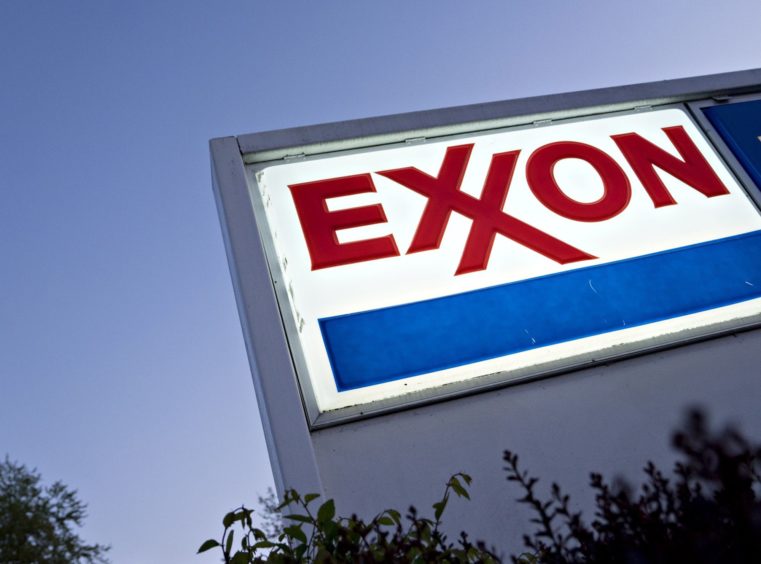
The Securities and Exchange Commission has been largely silent on the financial wreckage of the U.S. shale industry in recent years, but that may be about to change.
The top U.S. financial regulator’s reported investigation into how Exxon Mobil Corp values shale assets follows years of concerns about the industry’s rosy projections, which have left hundreds of billions of dollars of investor losses and writedowns.
Exxon, the West’s biggest oil company, is accused in a whistleblower complaint of inflating the value of a key asset in the Permian Basin and making drilling plans that were too optimistic, the Wall Street Journal reported Friday. The company denied the claims, while Exxon’s stock fell as much as 6%.
“The SEC is cracking down on the overvaluation of these type of hard-to-value assets,” said Arthur Jakoby, a former SEC official and now a partner at Herrick, Feinstein LLP in New York, and who’s not involved in the case. “It’s a very easy way to pump up the price of one stock, especially oil and gas companies using estimates for what they have in the ground.”
The shale revolution upended global energy markets over the past decade, making the U.S. the world’s top oil and gas producer and providing oceans of cheap crude to consumers. The jump in production was built on shaky financial foundations, however. Funded by cheap money and spurred on by the sky-high prices that shale assets were fetching at the height of the boom, industry executives pushed a narrative to investors that fracking would make U.S. oil fields comparable to those in the Middle East.
Oil giants like Exxon, ConocoPhillips and BP Plc made multibillion-dollar shale acquisitions, turning wildcatters into overnight billionaires. Fracking pioneers like Chesapeake Energy Corp. struck large, highly leveraged deals of their own. But even as the technology advanced and production soared, those companies continued to burn cash. The industry wrote down $450 billion of invested capital and saw more than 190 bankruptcies between 2010 and 2020, according to Deloitte LLP.
Many investors point to the gap in what shale companies say they can profitably drill and what they ultimately do. Exxon bought a large position in the Permian in 2017 and quickly ramped up production targets, culminating in a pre-pandemic plan to reach 1 million barrels of oil a day by 2024. The whistleblower complaint says some Exxon employees pushed for a lower valuation for some Permian assets because drilling times were longer than expected in 2018, the Journal reported.
The claims are “demonstrably false,” Exxon said in a statement, without confirming or denying that an investigation is under way. “Actual and provable performance exceeded drilling plans for the Permian and such performance has been accurately represented to the investment community.” The SEC declined to comment.
Still, the reported whistleblower complaint echoes what investors — and some engineers — have been saying about smaller shale companies’ projections for some time. Many investors now focus almost exclusively on free cash flow, a figure that’s harder to manipulate.
“It’s all been boiling under the surface since 2012,” said Ed Hirs, a longtime energy fellow at the University of Houston. “But the challenge here is really that, for the last several years, the investment community has only been looking at the cash flows.”
Nowhere is shale more hyped than in the Permian, now the biggest U.S. oil field. The excitement reached a fever pitch after the oil price crash of 2014-2016, when private equity rushed to get a piece of the action, getting what it believed would be a profitable entry point. Recently, many of those players have been forced to book massive impairments.
Concho Resources Inc., which Conoco agreed to buy in October, took a $12.6 billion charge for its oil and gas assets earlier last year, one in a long list of huge writedowns that followed a coronavirus-fuelled collapse in crude prices. The move came two years after the company bought RSP Permian at a price that valued its oil and gas assets far higher than deals involving neighbouring producers.
Apache Corp. also wrote down the value of its flagship Alpine High project, long touted as a prolific find in an ignored part of the Permian, which instead ended up being far richer in gas than oil.
At the start of the boom, when Aubrey McClendon was turning Chesapeake into a shale gas giant, the regulator changed its rules for how companies could calculate oil and gas reserves.
Many blame the relaxed regulatory environment on just how complicated calculating future production can be. It is, after all, an estimate based on assumptions like drilling times, how close together wells are fracked, and the cost of leasing land. As some engineers have said, reservoir engineering is more art than science.
“It‘s not a simple investigation because assets can be valued in many different ways,” Jakoby said. “The SEC will be looking for a smoking gun showing that management pushed for an overvaluation.”